Austin Reeder, region 1 specialist
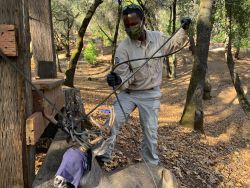
David Mollel, region 2 specialist
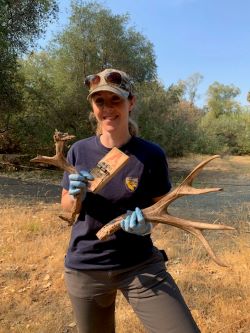
Megan O’Connor, region 2 specialist
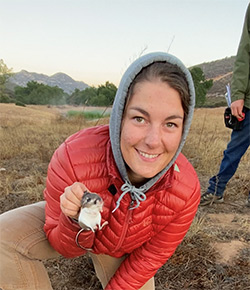
Megan Senour, region 3 specialist
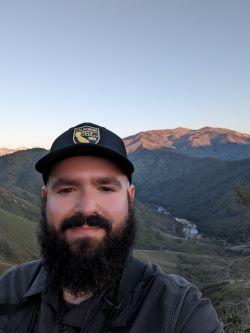
George Harse, region 4 specialist
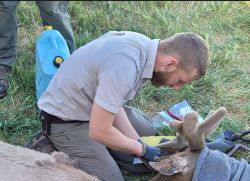
Chris DeTar, region 4 specialist

Jessica West, region 5 specialist
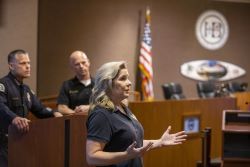
Rebecca Barboza, region 5 specialist
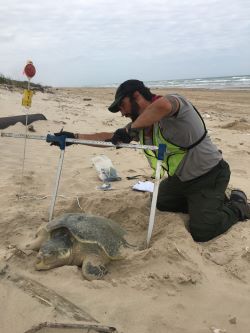
Kevin Howells, region 6 specialist
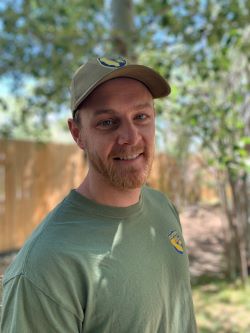
Dan Taylor, region 6 specialist
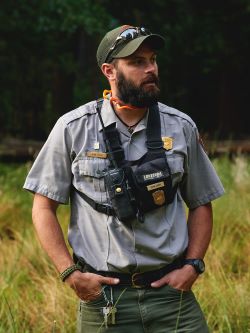
Ryan Leahy, statewide specialist
It’s not all that unusual for wild animals to end up in places where they shouldn’t be — you’ve probably seen video on the nightly news, read about it in the newspaper or maybe heard a rumor spread on your neighborhood social media group. Sometimes it’s a bear in a backyard or a young mountain lion near a school. Other times, it’s an aggressive turkey chasing a delivery driver or a coyote that steals food out of your outdoor pet dish. These are examples of human-wildlife conflict incidents, for which the public often turns to CDFW for guidance and solutions.
CDFW is the lead state agency responsible for responding to human-wildlife conflict and depredation (wildlife damage to private property) incidents. The types of human-wildlife conflict that can occur in California are as diverse as the people and wildlife that live here. Public perception, understanding and tolerance of wildlife can vary widely — leading to unique challenges for CDFW as a public trust agency. To meet these challenges, CDFW has recruited a team of wildlife conflict specialists that are skilled and equipped to serve local communities, agency partners and the diverse publics that co-exist with wild animals statewide.
On April 29, 2022, CDFW’s Human-Wildlife Conflict Program — part of the department’s Wildlife Health Lab (WHL) — graduated its first ever training cohort from its new Wildlife Conflict Training Academy. This training academy, similar to CDFW’s Warden Academy, provides staff with the tools, knowledge and resources necessary for safe, effective wildlife incident response. Coursework covered state codes and regulations, CDFW policy, wildlife capture and handling, public outreach, media training and wildlife damage management techniques focused on effective nonlethal tools. Coursework included cross-training on Wildlife Watch, a “train-the-trainer” program model designed to empower and inspire local communities with respect and stewardship for wildlife, and how to safely coexist with wildlife.
“I am so proud of our statewide Regional Conflict Specialists Team,” said Vicky Monroe, CDFW Conflict Programs Coordinator. “We’ve created a robust framework and a clear vision to support them and this important work.”
Monroe added that in addition to developing the training academy, a human-wildlife conflict “toolkit” and a Wildlife Damage Management speaker series, CDFW has provided a platform for the new team to receive technical assistance and training, as well as share experiences across CDFW’s regions.
“Our statewide team have a difficult job, but we are committed to helping transform conflicts with wildlife statewide,” she said.
The 11 CDFW wildlife conflict specialists completed 20 hours of course training and will work closely with other CDFW biologists and wildlife officers statewide, as well as CDFW’s Natural Resource Volunteer Program (NRVP) volunteers. Wildlife incident tracking and response guidance are all part of this effort to increase capacity and improve operational efficiencies.
Under this new robust framework, a minimum of two wildlife conflict specialists in each CDFW region provide dedicated support responding to human-wildlife conflict incidents reported to CDFW. Reporting parties range from members of the public to agency partners, local community leaders and law enforcement. Reports might come via the statewide online Wildlife Incident Reporting (WIR) System, by phone, email or in person. The conflict specialists work to help resolve wildlife incidents specific to the circumstances, which can vary. For example, a report about a “nuisance” raccoon or fox sighting might best be addressed with technical assistance by email or phone. A report about a mountain lion depredation could require a field response and technical assistance. A report about an orphaned bear cub could require a field response and close coordination with the WHL and regional staff.
The factors that contribute to human-wildlife conflict may vary, but one thing will not: CDFW’s new statewide Regional Conflict Specialists Team is ready, and on the frontline helping local communities, property owners and the public learn to safely coexist with wildlife!